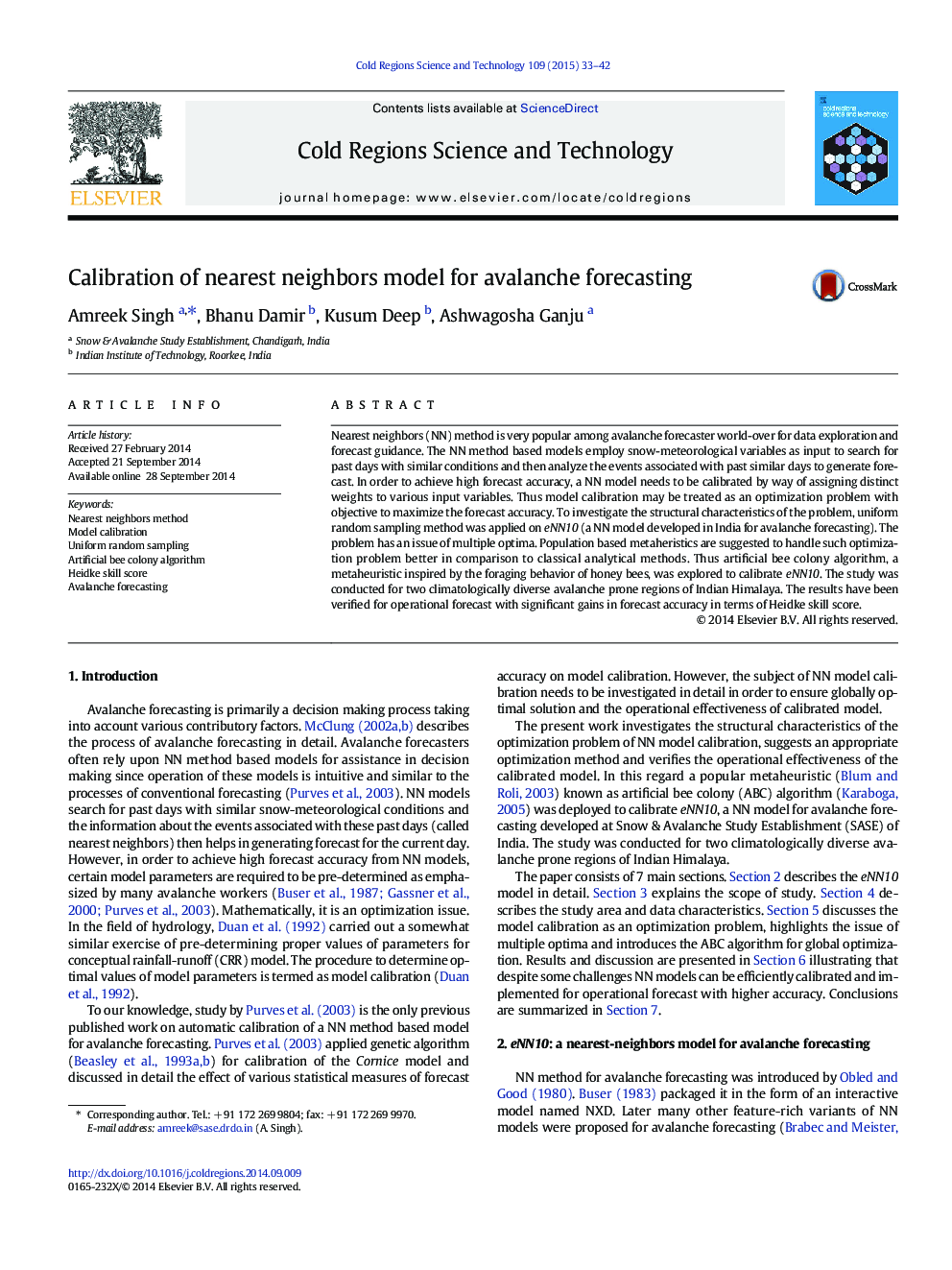| Article ID | Journal | Published Year | Pages | File Type |
|---|---|---|---|---|
| 6426910 | Cold Regions Science and Technology | 2015 | 10 Pages |
â¢Introduced eNN10 model and discussed issues of nearest-neighbor model calibrationâ¢Investigated structural characteristics of problem through uniform random samplingâ¢Explored artificial bee colony (ABC) algorithm for model calibrationâ¢Results verified for operational forecasting like setup for Indian Himalayaâ¢Significant gain achieved in forecast accuracy in terms of Heidke skill score
Nearest neighbors (NN) method is very popular among avalanche forecaster world-over for data exploration and forecast guidance. The NN method based models employ snow-meteorological variables as input to search for past days with similar conditions and then analyze the events associated with past similar days to generate forecast. In order to achieve high forecast accuracy, a NN model needs to be calibrated by way of assigning distinct weights to various input variables. Thus model calibration may be treated as an optimization problem with objective to maximize the forecast accuracy. To investigate the structural characteristics of the problem, uniform random sampling method was applied on eNN10 (a NN model developed in India for avalanche forecasting). The problem has an issue of multiple optima. Population based metaheristics are suggested to handle such optimization problem better in comparison to classical analytical methods. Thus artificial bee colony algorithm, a metaheuristic inspired by the foraging behavior of honey bees, was explored to calibrate eNN10. The study was conducted for two climatologically diverse avalanche prone regions of Indian Himalaya. The results have been verified for operational forecast with significant gains in forecast accuracy in terms of Heidke skill score.
